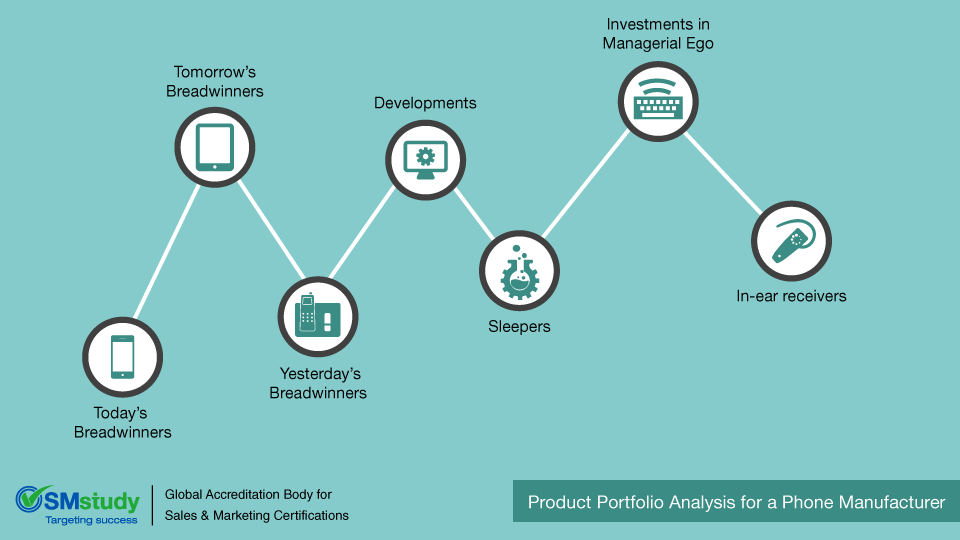Product portfolio includes all the products or services offered by a company. An analysis of the product portfolio is conducted by an organization to gather insights on growth prospects, opportunities, threats, profit drivers, etc. It is also helpful in evaluating the current product lines and projecting the future ones.
Peter Drucker had proposed a classification method to help companies analyze their product portfolio based on each product’s present and future profitability. In this classification method, product portfolio includes seven categories. Let’s discuss each of them one by one:
1. Today’s Breadwinners:
These are the star products of an organization. Such products are highly demanded and they are the one that contributes to the most in the current profits.
2. Tomorrow’s Breadwinners:
These are the products which are projected to be very profitable in the future but may not be contributing significantly at the present. As the companies see a very strong growth potential in such products, they may be confident enough to invest in them.
3. Yesterday’s Breadwinners:
This is a product category which once had very high demand and contributed significantly in the profitability of an organization. But, currently, they are not in demand and are not contributing to the profits any longer. However, the companies may choose to provide a minimum level of support but may not be interested in investing a lot in such products.
4. Developments:
These are the products which are in development stage. Making investments in their development to make them available in the market may be beneficial for the company. A thorough analysis of the market potential and ROI may be used by the organization while deciding whether or not to make an investment decision.
4. Sleepers:
These products had once been in the market but they could not establish themselves. The companies need to study the loopholes and causes of failure of these products and then decide the future of these products.
5. Investments in Managerial Ego:
These are the products which are backed by the influential managers but have little demand in the market. These products may be the cause of wastage of functional resources. The company should be alert to see that the products offered by them are accepted by the customers, otherwise investments and the resources may be wasted.
6. Failures:
These are the products that the companies choose to discontinue. This is because they neither contributed in profitability in the past nor do they have the potential to do the same in the future.
After classifying the products in these categories, the marketers will be in a position to pinpoint the products that contribute to the growth of the company. Generally, products that come in the first 3 categories of this matrix are the strengths of the company, while the last 2 are the weakness. However, the company needs to analyze products that fall in the category of “developments” and “sleepers”.


